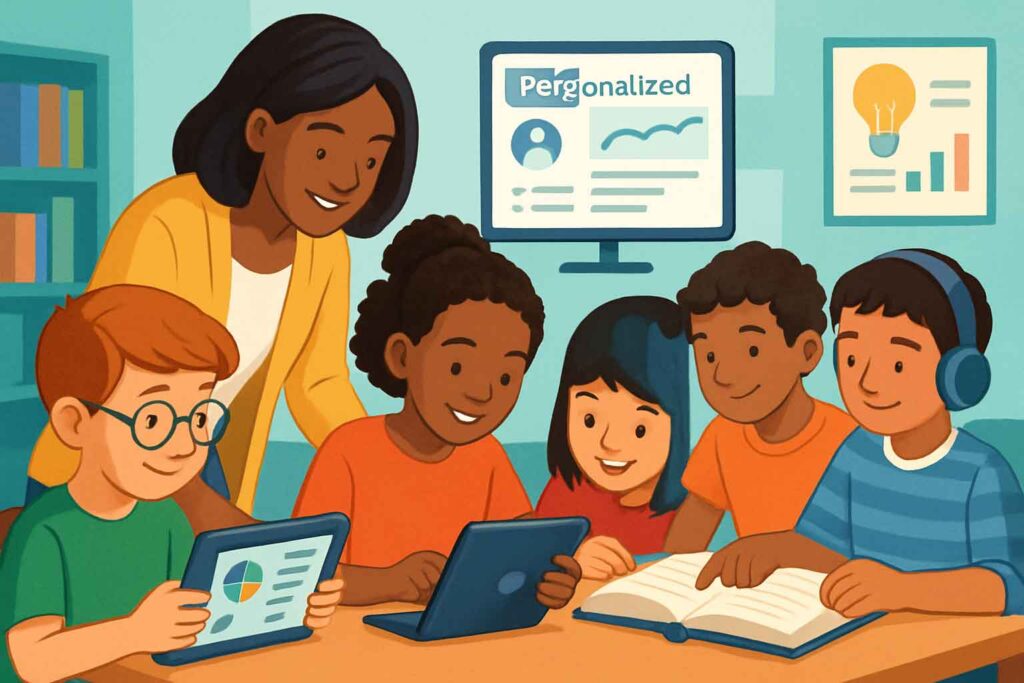Introduction
In a world where every child is unique, with distinct learning styles, paces, and interests, a one-size-fits-all approach to education often falls short. Personalized learning emerges as a powerful solution, aiming to customize the learning experience to meet the individual needs of each student. Far beyond simply differentiating instruction, personalized learning leverages technology, flexible environments, and student agency to create an educational journey that is truly tailored. This article will explore the core principles of personalized learning, its significant benefits for children, and practical ways for parents and educators to implement this transformative approach.
What is Personalized Learning?
Personalized learning is an educational framework that aims to provide a learning experience that is responsive to the individual needs of each learner. It is characterized by several key components:
•Student Agency: Learners have a voice and choice in their learning, including what, how, when, and where they learn.
•Competency-Based Progression: Students advance based on demonstrated mastery of skills and concepts, rather than seat time or age.
•Flexible Learning Environments: Learning can happen in various settings, both inside and outside the traditional classroom, utilizing diverse resources.
•Personalized Learning Paths: Each student has a unique learning plan or pathway, often supported by technology, that adapts to their progress and interests.
•Teacher as Facilitator: The role of the educator shifts from being a dispenser of information to a guide, mentor, and facilitator of learning.
The Benefits of Personalized Learning for Children
Personalized learning offers a multitude of advantages that contribute to a child’s academic success, engagement, and overall well-being:
1. Increased Engagement and Motivation
When learning is relevant to a child’s interests and tailored to their pace, they are more likely to be engaged and motivated. This intrinsic motivation leads to deeper learning and a more positive attitude towards education.
2. Deeper Understanding and Mastery
By allowing students to progress at their own pace and focus on areas where they need more support, personalized learning ensures that foundational concepts are truly mastered before moving on. This prevents gaps in understanding and builds a strong knowledge base.
3. Development of Self-Direction and Ownership
Personalized learning fosters student agency, empowering children to take ownership of their learning journey. They learn to set goals, manage their time, seek resources, and reflect on their progress, developing crucial self-regulation and executive function skills.
4. Catering to Diverse Learning Styles
Every child learns differently. Personalized learning accommodates various learning styles (visual, auditory, kinesthetic, etc.) by offering diverse instructional methods and resources, ensuring that each child can access information in a way that best suits them.
5. Cultivation of 21st-Century Skills
This approach naturally promotes skills vital for the modern world, such as critical thinking, problem-solving, collaboration, communication, and digital literacy. Students learn how to learn, a skill that will serve them throughout their lives.
6. Reduced Learning Frustration
Children who struggle with a concept are not left behind, and those who grasp material quickly are not held back. This reduces frustration and boredom, creating a more positive and supportive learning environment.
Implementing Personalized Learning at Home and in the Classroom
Personalized learning can be integrated into various educational settings, from the home to the classroom. Here are practical strategies for parents and teachers:
For Parents:
•Identify Your Child’s Interests and Learning Style: Observe what excites your child and how they naturally learn best. Do they prefer hands-on activities, reading, or listening?
•Provide Choice and Autonomy: Allow your child to choose books, projects, or even the order in which they complete tasks. This fosters a sense of control and responsibility.
•Leverage Educational Technology: Utilize apps, online platforms, and educational websites that offer adaptive learning paths and personalized content.
•Create a Flexible Learning Space: Designate areas in your home that support different types of learning – a quiet reading nook, a space for creative projects, or a digital learning station.
•Encourage Self-Reflection: Ask your child what they learned, what was challenging, and how they might approach a similar task differently next time.
For Teachers:
•Utilize Diagnostic Assessments: Begin with assessments that pinpoint each student’s strengths and areas for growth, informing their personalized learning path.
•Implement Differentiated Instruction: Provide varied materials, activities, and assignments to cater to different readiness levels and learning preferences within the classroom.
•Integrate Technology: Use Learning Management Systems (LMS), adaptive learning software, and educational apps that can track progress and offer customized content.
•Foster Student Goal Setting: Guide students in setting their own learning goals and developing plans to achieve them. Regularly review and adjust these goals.
•Create Flexible Groupings: Allow students to work individually, in small groups, or with the whole class, depending on the learning objective and their needs.
•Provide Timely and Specific Feedback: Offer feedback that helps students understand where they are, where they need to go, and how to get there.
•Cultivate a Culture of Inquiry: Encourage students to ask questions, explore topics deeply, and pursue their own curiosities.
Conclusion
Personalized learning represents a significant shift towards an education system that truly values and nurtures the individual. By recognizing and responding to each child’s unique needs, interests, and strengths, we can unlock their full potential and foster a lifelong passion for learning. As parents and educators, embracing personalized learning means moving beyond traditional boundaries and creating dynamic, student-centered environments where every child can thrive and become a confident, self-directed learner ready for the challenges of the future.
